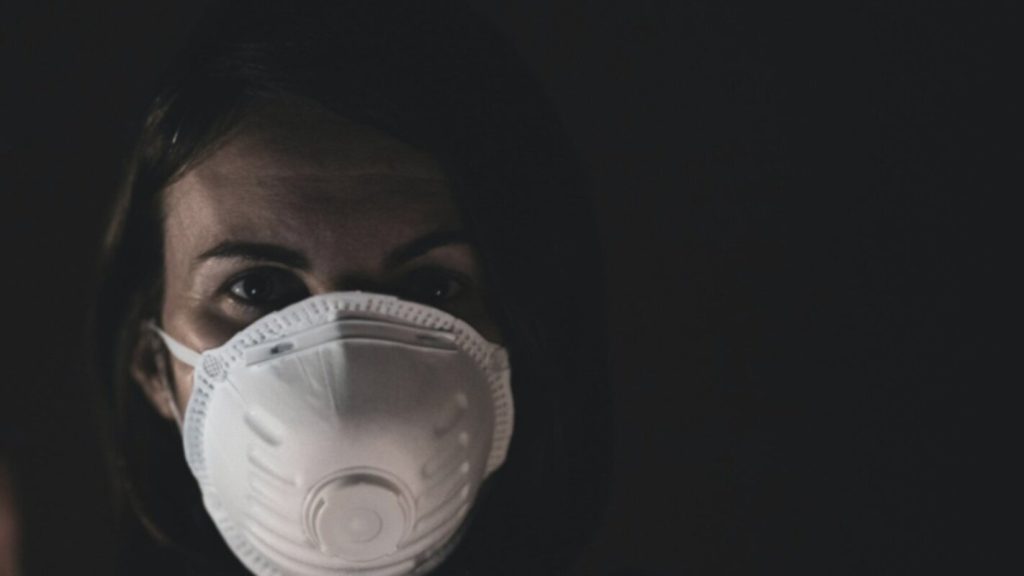Hexavalent chromium [Cr(VI)] is a hazardous material that can cause serious health problems when inhaled or ingested. Workers in various industries, such as welding, painting, and plating, are often exposed to hexavalent chromium above the permissible exposure limits. Exposure to Cr(VI) can lead to respiratory illnesses including lung cancer. It is essential to take measures to control and eliminate the exposure of workers to this hazardous material. In this article, we will provide information on the use of respiratory protection to protect employees from hexavalent chromium exposure in the workplace. Find more detailed information about how to develop a Respiratory Protection Program.
What is hexavalent chromium?
Hexavalent chromium is one of the valence states (+6) of the element chromium. It is typically used to add corrosion resistance, improve hardness and durability of metals, and give a glossy finish to paints. Hexavalent chromium is also used in the manufacturing of pigments, dyes, and alloys.
Cr(VI) is usually generated by industrial processes and is used in many different industries. Workers can be exposed to hexavalent chromium through inhalation of fumes and dust, ingestion, and skin contact. Industries where you may find an occupational exposure to Cr(VI) include:
- Aerospace and Aviation
- Automotive repair
- Construction
- General Manufacturing
- Painting, Pigments, Dyes, and Coating Manufacturing
- Textile Manufacturing
How are workers exposed to Cr(VI) in the workplace?
Exposure can occur during operations such as:

ELECTROPLATING PLANT
Electroplating
Mists or dusts can be generated during the plating process which can be inhaled by the worker. There is also a possibility of splashes to the skin of Cr(VI) containing solutions.

MANUFACTURING STAINLESS STEEL PIPES
Welding stainless steel
Welding fumes generated by the welding process can contain hexavalent chromium which can be inhaled by workers if not adequately ventilated.
- Grinding, sanding, and polishing surfaces coated with chromium
- Dusts which contain chromium can be inhaled by the employees during these processes if adequate ventilation does not exist.
- Handling chromate pigments
- Hexavalent chromium used in the manufacturing of dyes and pigments used in the textile industry can be inhaled by the employee.
- Spraying chrome-based paint
- Special paints are used in the automotive and aerospace industries to improve the hardiness of metals and give shiny finish. This can be inhaled by employees if there is not adequate ventilation.
Hexavalent chromium is also present in some industrial wastewater and can cause exposure during handling and disposal.
What are the health risks and effects of exposure to hexavalent chromium?
Exposure to hexavalent chromium can cause a range of health problems including, but not limited to:
- Respiratory illnesses such as asthma, chronic bronchitis, and chronic obstructive pulmonary disease (COPD)
- Lung cancer
- Nasal and sinus cancer
- Nasal septum ulceration
- Liver and kidney damage
- Eye and skin irritation
One of the most significant risks of exposure to hexavalent chromium is lung cancer and the Occupational Safety and Health Administration (OSHA) has classified hexavalent chromium as a human carcinogen.
What are the OSHA regulations for hexavalent chromium exposure?
OSHA’s permissible exposure limit (PEL) for hexavalent chromium is 5 micrograms per cubic meter of air (5 µg/m³) as an 8-hour time weighted average. Employers are required to implement engineering and administrative controls to keep exposure levels below the PEL. If exposure levels cannot be kept below the PEL, employers are required to provide respiratory protection to workers.
- Exposure Assessment – Employers must conduct initial and periodic exposure assessments to determine if employees are exposed to Cr(VI) above the PEL. You can find more information on how to properly conduct a hazard assessment for respiratory protection here.
- Engineering and Work Practice Controls – Employers must implement engineering and work practice controls to reduce exposure to Cr(VI) to or below the PEL, including using local exhaust ventilation, wet methods, and enclosed processes to reduce overall employee exposure.
- Respiratory Protection – Employers must provide respiratory protection to employees when exposure to Cr(VI) cannot be adequately controlled below the PEL through the use of engineering and work practice controls.
- Protective Clothing and Equipment – In addition to respiratory protection, employers must provide other personal protective equipment such as gloves, eye and face protection, and protective clothing, to employees who may be exposed to Cr(VI).
- Medical Surveillance: As with asbestos, OSHA requires that employers must provide medical surveillance to employees who are exposed to Cr(VI) at or above the action level (2.5 micrograms per cubic meter of air) for 30 or more days a year.
How can exposure to hexavalent chromium be controlled and eliminated in the workplace?
Employers can take several measures to control and eliminate exposure to hexavalent chromium in the workplace, including:
- Engineering Controls
- Employers should implement engineering controls, such as ventilation systems and wet methods, to reduce the concentration of hexavalent chromium fumes, mists, and dusts in the air.
- Example: Johnson’s Tank and Welding received a large contract to produce 100 stainless steel water tanks for the federal government. In order to complete this task, the employees must complete shielded metal arc welding (SMAW) using a stainless-steel electrode. After looking at the Safety Data Sheet for the steel being welded as well as the electrode, it was determined that the potential for hexavalent chromium exposure was high, Johnson’s Tank and Welding rented chemical fume extractors while the job was being completed to minimize employee exposure and health effects.
- Administrative Controls
- Employers should implement administrative controls, such as providing training to workers on the hazards of hexavalent chromium and rules that ensure that workers are aware of the proper use of personal protective equipment.
- Personal Protective Equipment
- Employers must provide workers with appropriate personal protective equipment (PPE) to reduce exposure to hexavalent chromium if engineering or administrative controls are unable to prevent exposure below the PEL. PPE could include respiratory protection, eye protection, and skin protection.
What respiratory protection should be used to protect workers from hexavalent chromium?
Respiratory protection is an essential aspect of protecting workers from exposure to hexavalent chromium. The respiratory protection needed to protect workers from hexavalent chromium exposure depends on the level of exposure and the environment in which the work is being performed.
The OSHA standard for hexavalent chromium sets specific requirements for respiratory protection which includes the use of air-purifying respirators or supplied air respirators.
The type of respirator filter or cartridge which will be used is key and depends on the specific level of Cr(VI) in the work environment to which employees will be exposed. Hexavalent chromium exposure typically presents in the form of a mist, fume, or dust and most organic vapor and particulate cartridges will provide adequate protection. However, always refer to your hazard assessment and the manufacturers specifications for correct use, maintenance, and storage of the respirator.
In conclusion, employee occupational exposure to hexavalent chromium can pose significant health risks and must be addressed in the workplace proactively. Employers must take action to control and eliminate this exposure through proper engineering and administrative controls, as well as personal protective equipment such as respiratory protection. It’s essential for both employers and employees to be educated on the risks associated with hexavalent chromium exposure and the necessary precautions that should be taken to mitigate these risks. By following OSHA’s regulatory standard for hexavalent chromium and respiratory protection, employers can ensure that their workers are safe and healthy on the job.
A critical and required step before allowing employees to use respirators is to conduct a medical evaluation. Vest’s Respirator Clearance system can assist your organization with completion of the Medical Evaluation Questionnaire to medically qualify employees for respirator use. Speak with a Vest representative about respirator clearance.
OSHA Reference: https://www.osha.gov/hexavalent-chromium
Medical Surveillance Reference: https://www.osha.gov/sites/default/files/publications/OSHA-3373-hexavalent-chromium.pdf



